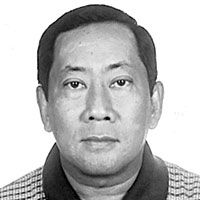The liberation of Cebu 70 years ago today

Exactly 70 years ago V-Day came to Cebu when the Victor II Attack Group of the Americal Division supported by the 7th Fleet’s Task Force 74 complete with 59 ships appeared off the coast of Talisay (now a city) just six kilometers from Cebu City. It was the Liberation of Cebu. The Americans formed the Victor II Attack group in Tacloban City after the invasion and this was led by Maj. Gen. William “Hap” Arnold with the 132nd Infantry of some 14,000 US soldiers led by Col. Claude M. McQuarrie.
My late uncle, Col. Manuel F. Segura’s guerrilla group, which was led by an American mining engineer Col. James Cushing was designated to attack and secure the Buhisan Dam, Cebu City’s water reservoir and they would now fall under the Americal Division. The Americal Division was formed in New Caledonia (hence the name Americal) and these soldiers were the most battle hardened among US troops because they fought in Guadalcanal, in Bougainville in the Solomon Islands, in Hollandia in New Guinea and all the way to the invasion of Leyte in October 1944.
If I am able to write about the exploits of the Americal Division it is because my other uncle, Dr. Alfredo Segura, who is a collector of World War II books gave me two books on the Americal Division’s exploits. The first book that he gave me was entitled “On the Southern Cross: The Saga of the Americal Division 1942-1945” by Captain Francis D. Cron and the other book was “Orchids in the Mud: A personal account by veterans of the 132 Infantry Regiment” edited by Robert C. Muehrcke.
These are rare books that one can hardly find even in the USA. But since no Cebuano or Filipino author (except for my uncle Col. Manuel Segura who wrote the books “Tabunan and Koga Papers”) these are the only authoritative texts written about the Leyte and Cebu invasion taken from the soldiers of the Americal Division and they are quite detailed and thorough.
This week, my good friend and fellow historian Prof. Jobers Bersales escorted some ten Vietnam veterans belonging to the Americal Division, who brought along David Taylor, the official historian of the Americal Division. They are in Cebu to grace the 70th anniversary of the Liberation of Cebu in the Tangke beach in Talisay today.
The Liberation of Talisay started with the usual bombardment by the 7th fleet to “soften” up the beaches of any mines. At exactly 8:30 a.m., Landing Vehicle Tracked (LVT) “Amtracs” bearing soldiers from the Americal Division left their mother ships and landed in Tangke Beach designated as Green Beach 1, 2 and 3 and they were only met with sporadic sniper and machinegun fire, which meant that Talisay was lightly defended.
As they hit the beachhead, suddenly ten of the first 15Amtracs hit Japanese improvised mines and were destroyed or damaged. Somehow these mines were not neutralized by the naval bombardment. Soon the beaches were in a traffic jam, as the first wave could not move forward as the troops had to wait for someone to clear the minefield. Later, the troops clearing the beach found three rows of improvised mines and cleared all of them. But it was a grueling hour and a half wait, but lucky for the Americal Division, the main Japanese forces were waiting for them in the hills of Cebu City.
The first day of the Liberation of Cebu was in a way uneventful if you compare it to the invasion of Leyte. The Liberation of Cebu or V-Day’s total losses for the Americal Division was 8 American soldiers killed and 39 wounded, all because their Amtracs hit the minefield. Japanese losses were pegged at 88 killed and 10 Japanese soldiers captured.
It is for this reason why every time we commemorate the Liberation of Cebu in the Talisay Landings, I always try to correct the Philippine Marines when the do a reenactment of the Talisay Landings because they would have mock Japanese troops attack them on the beachhead when no such thing ever occurred. I don’t really know why the Armed Forces of the Philippines (AFP) do not have their own historian to check out what really happened 70 years ago so that we can truly write the correct history of Cebu.
The first real Battle for Cebu City happened on March 28, 1945 when the 182nd Battalion under the command of Major John T. Murphy with the support of the 716th Tank Battalion drew heavy fire as they approached Gochan Hill. This is the hill behind the University of the Philippines (UP) Lahug Campus, which is now called Ecotech Center where many national government offices are located.
Gochan Hill guarded the entrance to the Lahug airfield. So the Americal Division set up howitzers in what is now Barangay Hippodromo. The Battle of Cebu City lasted two days, killing over 200 Japanese soldiers and neutralizing 85 pillboxes and a Sherman tank was destroyed. When I was a kid, I played with the ruined Sherman tank. Alas someone sold it for scrap.
* * *
Email: [email protected] or [email protected]
- Latest
- Trending


























